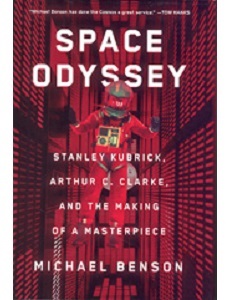As we celebrate the 50th anniversary of the Apollo 11 mission, it’s good to be reminded of a seminal science fiction film that only just predated that first manned lunar landing – 2001: A Space Odyssey. Many books have been written on the making of 2001, but it seems there is always room for another. In this analysis, the author begins by comparing 2001 to Homer’s ‘Odyssey’ and Joyce’s ‘Ulysses’ and continues in a somewhat academic tone; but once he gets this out of the way it settles down to a more accessible and pragmatic piece of writing. For example, his questioning of Arthur C Clarke on who-wrote-what shows a keen understanding of the ego present in the room. And his later comments on the “interpersonal politics in the British Interplanetary Society” (of which Clarke had been chairman twice) indicate a refreshing willingness – sometimes absent from biographies - to ‘tell it how it is’.
A cute additional preface to the book is a list of “major characters – in order of appearance”. Unsurprisingly, Kubrick and Clarke are first ‘on set’, but it was the ‘appearance’ of 2001 technical consultant (himself a biographer of 2001) Fred Ordway that made me want to consult the index. The early references describe a well-known story of collaboration, but later ones depict a lawsuit filed by Ordway on behalf of an international space museum he co-founded (all part of a misunderstanding about non-profit and for-profit companies). Speculating that Ordway was “already agitated” by this, the author reveals that Ordway’s initial review of the film was an “eight-page letter to Kubrick [that] vented exasperation at 2001’s opacity”. Coming from “one of Kubrick’s closer collaborators”, it was, states the author, “a remarkable document”.
As 2001: A Space Odyssey enters its second half-century, fans of the film will be dusting off their videotapes and DVDs to take another look at this cinematic masterpiece. They might also want to read this book.











